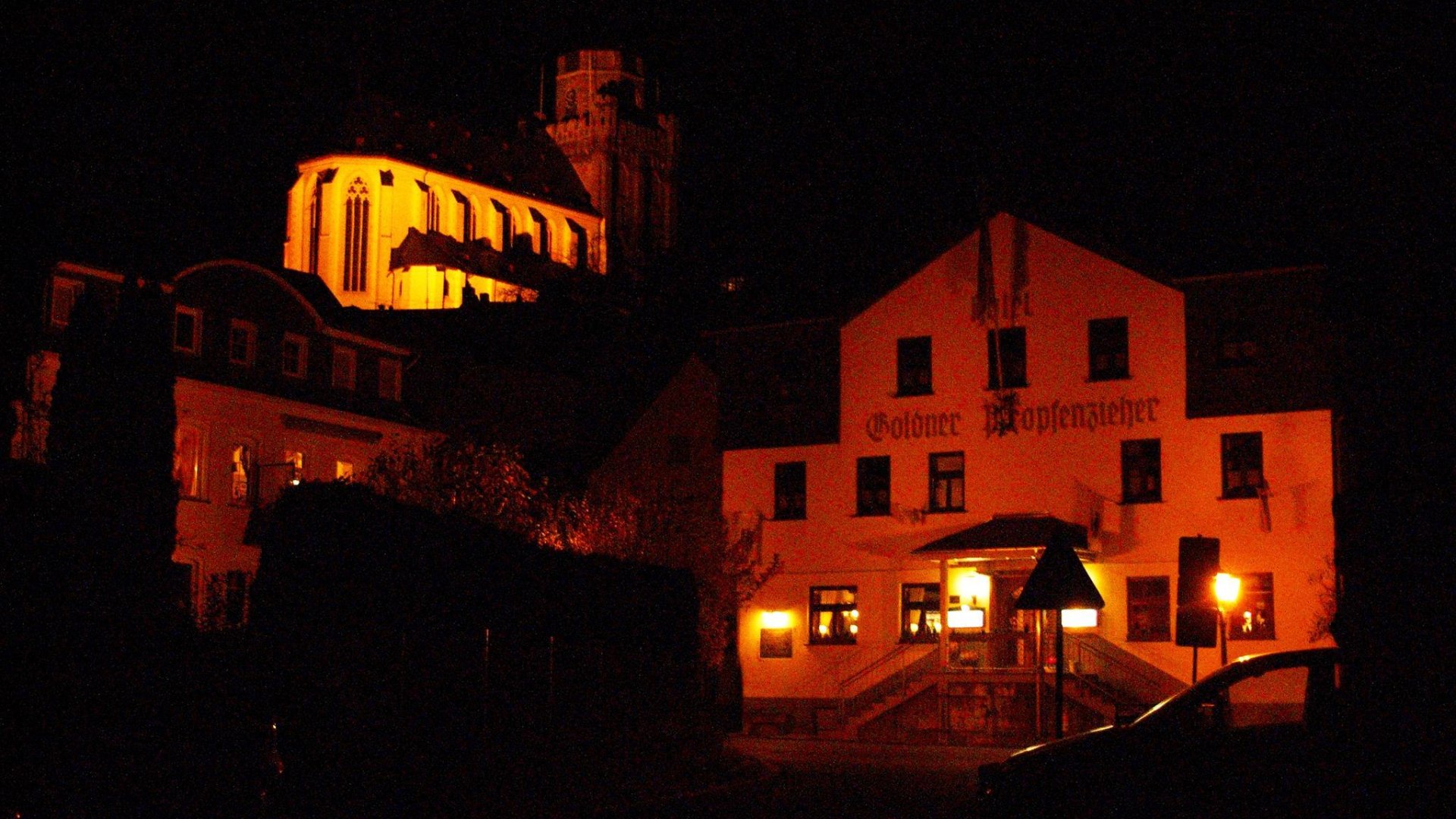00:01 - 00:00
Goldener Pfropfenzieher
Am Plan1, 55430 Oberwesel
The Hotel am Plan is located in the northern suburb, on a square that opens onto the Rhine. The name and the origin of the square are probably connected with the walling of the suburb Niederburg after 1250. The name "Plan" stands for a free, public square or battlefield. The plastered Rähmbau is a two-story, eaves building with the horizontal upper edge of the roof running parallel to the street. A frame building is a special construction method of the late Middle Ages in which the outer walls bear the load of a single floor. It also allowed the next floor to be built slightly overhanging, gaining more space on small footprints. In addition, the house has a barrel-vaulted basement, a massive first floor and a wide dwarf house with three axes. Over the centuries, several reconstructions and extensions have taken place. A smaller predecessor building from the 18th century was architecturally modified both in the first half of the 19th century and in 1967. After a fire in 1993, the structure was demolished and replaced by a replica. Especially at the time of the Rhine Romanticism in the 19th century, many famous personalities stayed in this hotel. The Düsseldorf painter Adolf Schroedter is said to have given the hotel its name "Goldener Pfropfenzieher" around 1834. The former name "Auspann am Rhein" comes from the fact that the treidler used to unhitch their horses there. Other guests were Karl Simrock (German writer and poet), Emmanuel Geibel (German poet), Victor Hugo (French poet and author) and a Russian baron. According to a plaque to the left of the two-flight staircase, Hoffmann von Fallersleben is said to have sung the "Deutschlandlied" there on August 17, 1843. In the course of mass and Rhine tourism and the large number of English tourists, the owner renamed the hotel "the golden corckscrew" in the meantime. The fact that the city wall ends or continues to the north and south of the hotel is a result of the demolition on New Year's Eve 1900 by the then owner Franz Fey. (Kira Bublies, University of Koblenz-Landau, 2016

